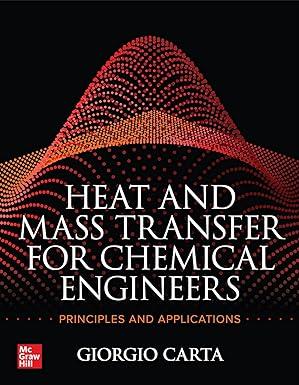An air-cooled utility engine needs to dissipate 2,000 W of heat in order to operate at a
Question:
An air-cooled utility engine needs to dissipate 2,000 W of heat in order to operate at a steady temperature of 150°C when the ambient temperature is 25°C. The engine block can be represented as a 3-in.-
diameter cylinder, 20 cm long. Cooling is achieved by attaching 10 fins to the engine block. The fins are made of a metal with a thermal conductivity k
= 65 W/m K and a density ρs = 7,000 kg/m3. The convective heat transfer coefficient is estimated to be h = 100 W/m2 K. Weight is a concern. Thus, it is important to optimize the fin design.
(a) Determine the minimum-weight fin design and the fin-tip temperature if 10 rectangular fins spanning the length of the engine block are installed.
(b) Determine the minimum-weight fin design and the fin-tip temperature if 10 circular fins are installed along the length of the engine block. For each case plot, the total weight of the fins as a function of their half-thickness B to find the minimum weight design.
Step by Step Answer:

Heat And Mass Transfer For Chemical Engineers Principles And Applications
ISBN: 9781264266678
1st Edition
Authors: Giorgio Carta




